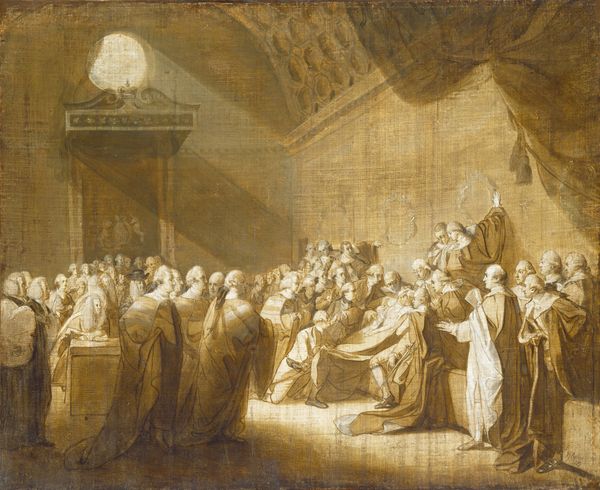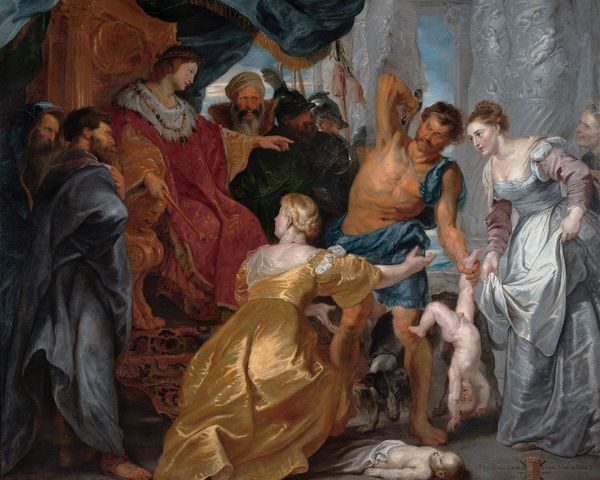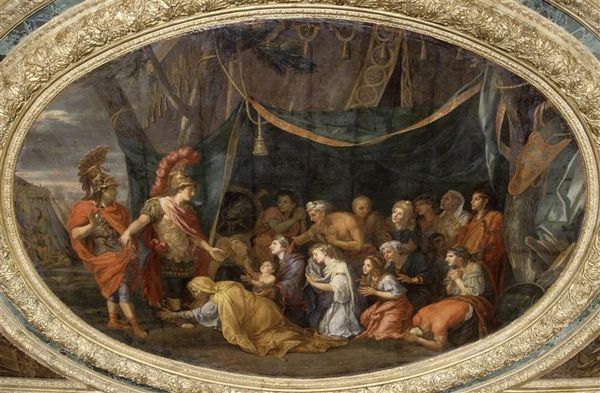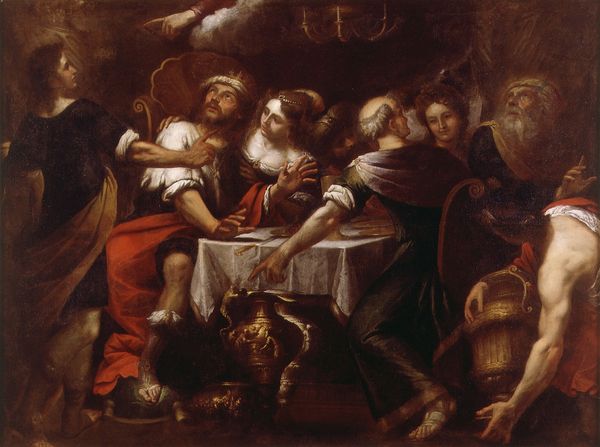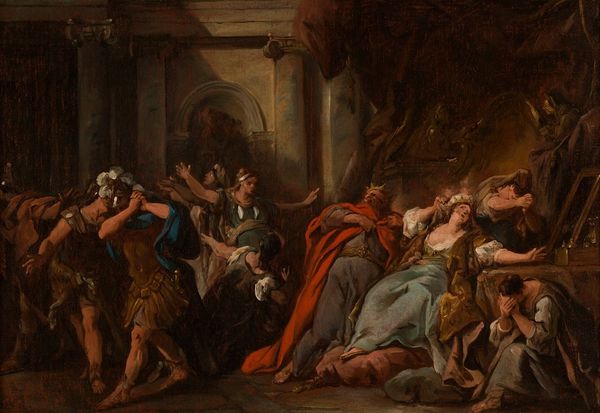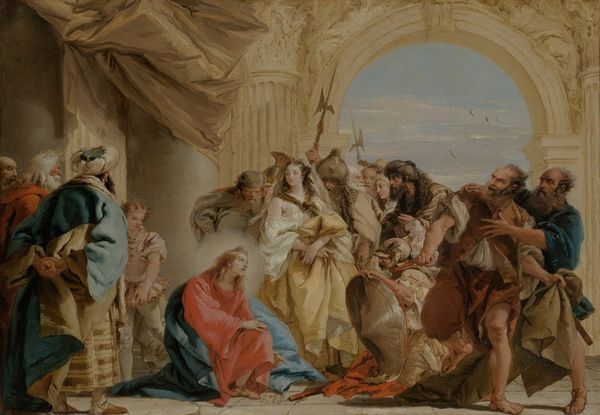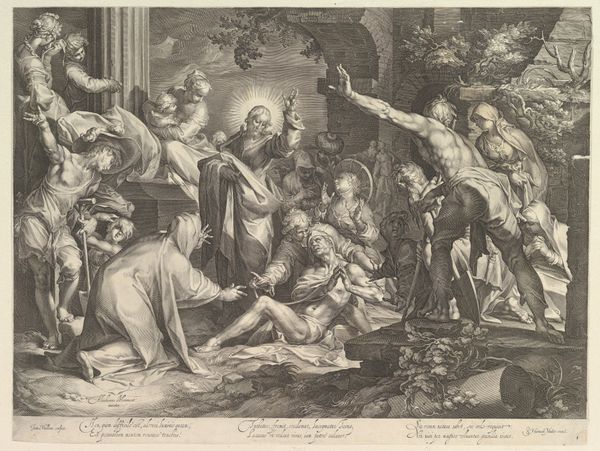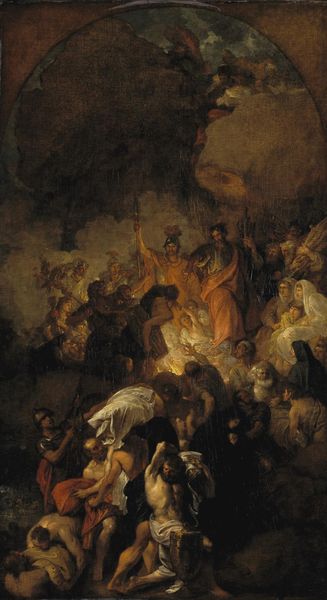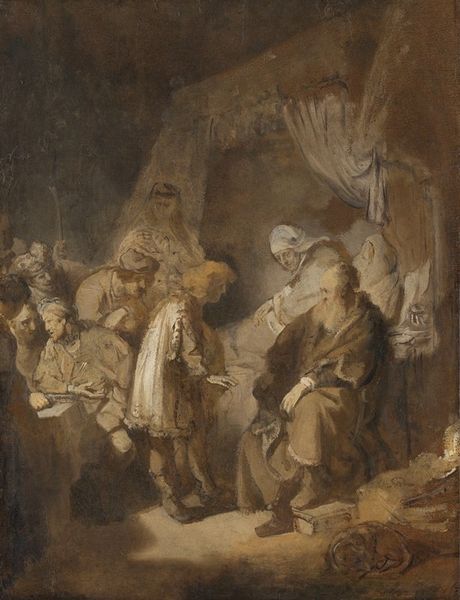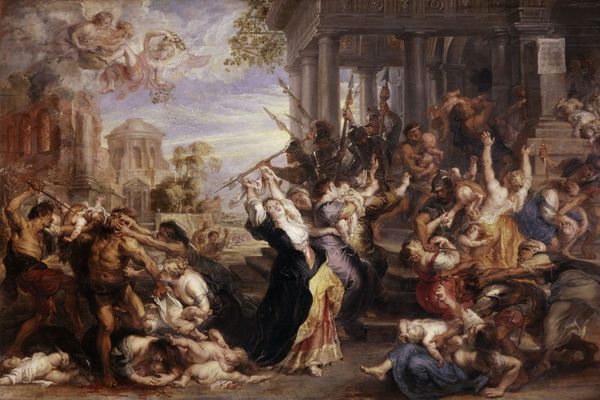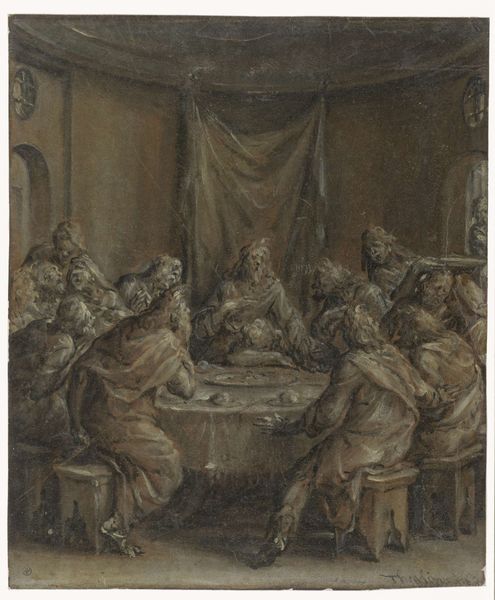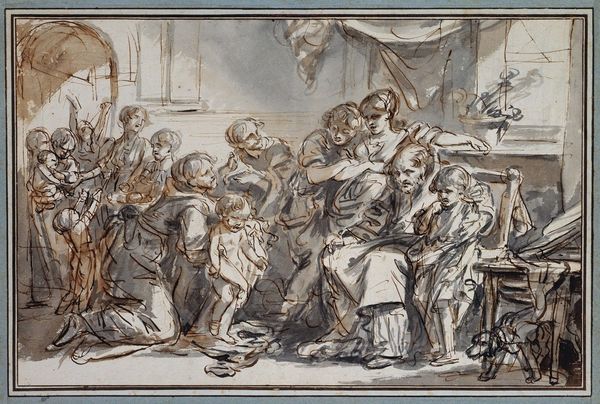
Dimensions: support: 635 x 768 mm frame: 460 x 840 x 110 mm
Copyright: CC-BY-NC-ND 4.0 DEED, Photo: Tate
Curator: This is John Singleton Copley's preparatory work, "Study for 'The Collapse of the Earl of Chatham,'" currently held at the Tate. Editor: What strikes me is the dramatic lighting—it’s like a spotlight on a pivotal moment, all in shades of sepia. Curator: Indeed. Observe how Copley uses monochromatic tonality to unify the composition, drawing attention to the figures' gestures and the unfolding narrative. Editor: I’m getting a real sense of foreboding here, the way the figures are clustered, their faces etched with concern—it's almost theatrical. Curator: Absolutely, and in its formal structure, we see an echo of history painting conventions employed to convey gravitas. Editor: Looking at this, I’m reminded that even the most powerful figures are ultimately vulnerable, these bodies are very fragile. Curator: Precisely, and Copley masterfully captures that fragility through his skillful manipulation of form and tone. Editor: It's a stark reminder of mortality, even amidst the grandeur of political life.
Comments
tate 6 months ago
⋮
http://www.tate.org.uk/art/artworks/copley-study-for-the-collapse-of-the-earl-of-chatham-n01072
Join the conversation
Join millions of artists and users on Artera today and experience the ultimate creative platform.
tate 6 months ago
⋮
This is a study for a large painting to commemorate an incident in the House of Lords on 7 April 1778, when the great statesman William Pitt, Earl of Chatham, collapsed with a fatal stroke while speaking against American independence. Because he supported the colony's interests in every other respect, he was greatly admired by most Americans, including Copley. The recent event is presented here as a grand historical drama, on a scale usually reserved for ancient history. Although carefully composed and enhanced (the peers, for instance, were not wearing their official robes at the time), the work remains faithful to reality with over fifty accurate portraits of those present. Gallery label, September 2004
